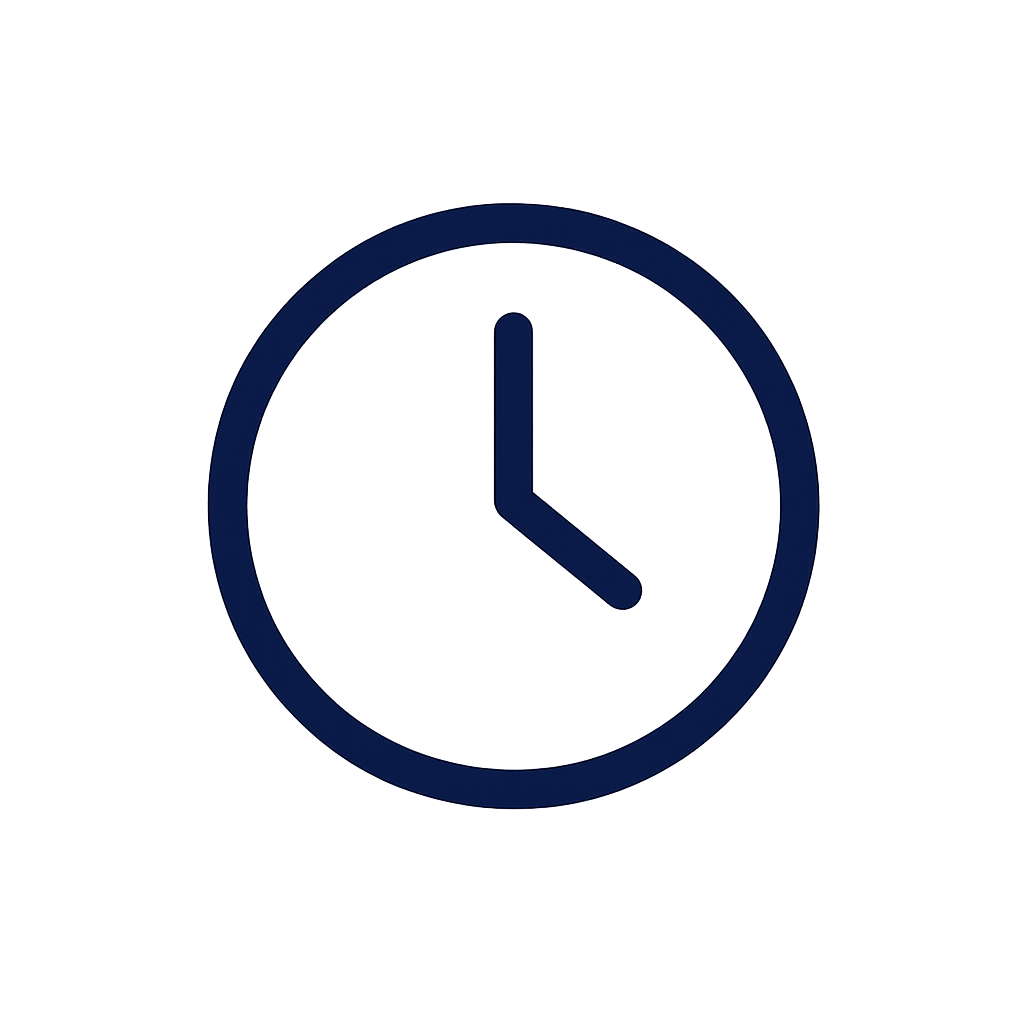Atlas Systems Named a Representative Vendor in 2025 Gartner® Market Guide for TPRM Technology Solutions → Read More

what is Compliance Monitoring? - Framework, Examples (+ Workflow)


20 min read | Last Updated: 28 Dec, 2025
TL;DR
- Proactive risk management: Ongoing process ensuring adherence to internal policies and external regulations through continuous observation, evaluation, and testing to identify violations before escalation
- Nine-step implementation framework: Conduct legal analysis, perform compliance audits, establish clear policies, align reporting, train employees, monitor continuously, take corrective actions, and regularly review
- Key challenges addressed: Complex evolving regulations, inadequate resources, time-consuming manual processes, lack of accountability, and integration issues require automated compliance tracking and defined roles
- Atlas Systems automation: Provides real-time risk alerts, automated compliance tracking, AI-driven risk assessment, vendor compliance monitoring, and centralized policy management for continuous adherence
Would your business survive a million-dollar fine for compliance violations? Non-compliance with industry and government regulations can attract hefty penalties that cripple entire organizations.
In May 2023, Meta faced a $1.2 billion fine for failing to comply with the EU’s GDPR.
Regulatory compliance monitoring is the ongoing process of tracking, assessing, and reporting an organization’s adherence to internal policies and external laws to ensure operational and legal integrity.
An effective monitoring program helps businesses stay ahead of regulatory demands, identify risks early, and avoid costly fines. This guide explains how to build a proactive compliance strategy for lasting governance confidence.
What is Compliance Monitoring?
Compliance monitoring is the ongoing process of ensuring an organization adheres to internal policies, external regulatory requirements, and industry-specific standards. It involves implementing a robust program that ensures continuous observation, evaluation, and testing of operations to identify and address potential violations before they escalate.
Why is Compliance Monitoring Important?
Compliance monitoring is important as it helps you adhere to laws, regulations, as well as internal policies. By implementing an effective compliance monitoring program, you can proactively identify areas of noncompliance, both with internal policies as well as external regulations.
Here are several benefits of monitoring control and compliance:
- Improves risk management: Monitoring compliance is a cornerstone of cybersecurity as it helps you proactively identify and mitigate potential risks related to legal, financial, and operational compliance. Compliant organizations are constantly updated with changing regulations which helps them avoid severe penalties, hefty fines, and serious legal actions related to noncompliance.
- Reputation management: Noncompliance can tarnish your organization’s reputation. This is because customers, investors, and employees fear doing business with organizations that are constantly facing legal issues and other risks related to noncompliance. Consistent compliance monitoring demonstrates your commitment to ethical practices and regulatory adherence which helps to maintain a good image and equally its trust to stakeholders.
- Improves operational efficiency: Compliance monitoring enhances operational efficiency by ensuring adherence to regulations and procedures, reducing risks, and preventing costly violations. It streamlines processes, improves accountability, and enhances data security. Automated compliance tracking minimizes manual effort, allowing you to focus on core activities, improve decision-making, and maintain a strong reputation while avoiding legal and financial penalties.
- Improves financial health: Implementing a strong compliance monitoring system ensures accurate reporting and financial integrity. This is crucial for maintaining investor confidence and securing funding.
Who is Responsible for Monitoring Compliance?

Compliance monitoring is typically the responsibility of several key roles within an organization, depending on the industry and regulatory requirements.
Here are the primary individuals or departments responsible for overseeing the compliance monitoring unit:
- Compliance officer/department: A designated compliance officer or department is responsible for ensuring that the company adheres to policies, ethical guidelines as well as legal and regulatory requirements. They develop and implement a compliance monitoring plan, conduct training, and perform audits.
- Management: Senior and middle management are responsible for ensuring that their teams follow compliance procedures as well. They play a crucial role in creating a culture of compliance within the organization.
- Internal auditors: Internal auditors evaluate the effectiveness of an organization's internal controls, including compliance with laws and regulations. They ensure that risk management, governance, and internal control processes are operating effectively.
- External auditors/regulatory bodies and government agencies: Sometimes, external auditors or regulatory bodies and government agencies are involved in monitoring compliance to ensure that the organization adheres to industry standards and regulations.
If you lack in-house expertise or resources you can also hire a third-party consulting firm to develop a powerful monitor compliance program or undertake the entire compliance monitoring process on their behalf.
These consulting firms specialize in regulatory compliance, risk management, and corporate governance.
What Is Government Compliance Monitoring?
Government compliance monitoring ensures you follow laws, regulations, and industry standards. It involves audits, reporting, and inspection of financial records, documents, and operations to address violations.
The goal is to maintain transparency, accountability, and fairness while preventing fraud, data breaches, safety violations, and unethical practices. Government agencies enforce compliance through monitoring tools (change monitoring to tracking), investigations, and penalties.
For instance, the EU enforces GDPR compliance by monitoring how companies handle user data. In case of serious compliance violations, organizations are fined a maximum fine of €20 million (approximately £18 million) or 4% of their annual global turnover.
On September 1, 2023, Ireland's data protection authority imposed a fine of €345 million ($363,165,922.62) on TikTok for violating the general data processing principles outlined by the EU GDPR.
Key Components of an Effective Compliance Monitoring Program

An effective compliance monitoring system consists of several interconnected elements that ensure adherence to industry standards, legal regulations, and internal policies. These components form a structured approach to compliance and safeguard businesses from legal, operational, and noncompliance risks.
1. Risk assessment and evaluation
The foundation of a compliance monitoring plan lies in comprehensive risk assessment and evaluation. You must actively assess potential compliance risks and take necessary preventive actions. This involves:
- Conducting regular compliance policy reviews to align with evolving regulations and industry standards.
- Engaging third-party auditors for unbiased compliance evaluations and to identify weaknesses.
- Implementing internal audits to monitor adherence to compliance policies and detect areas needing improvement.
- Deploy third party risk software to streamline risk assessment by automating tracking, monitoring regulatory changes, and maintaining accurate records. These tools automate compliance monitoring processes such as tracking regulations to ensure your business is always up-to-date, monitoring your compliance status, and uncovering any gaps or compliance violations.
- Identifying potential compliance risks, prioritizing them based on their impact, and implementing controls to mitigate them.
2. Employee training
A well-trained workforce plays a pivotal role in maintaining compliance. Employees must understand their roles and responsibilities in maintaining compliance.
Hence, you must implement structured training programs that educate employees about compliance obligations and industry-specific regulations.
Key benefits of integrating employee training into your compliance monitoring program include:
- Reducing the likelihood of compliance violations
- Minimizing legal exposure and protecting the organization from liability
- Enhancing productivity by equipping employees with the necessary compliance knowledge
- Clarifying individual responsibilities in regulatory adherence
You should integrate regular training sessions, workshops, and e-learning modules into the compliance framework to keep employees updated on new regulations, internal policies, and compliance protocols.
3. Clear compliance policies and defined roles
A strong compliance monitoring and testing framework relies on well-documented policies and clearly defined roles within an organization. These ensure structured and transparent operations. You must undertake the following:
- Establish clear compliance policies that provide guidelines for managing compliance issues effectively
- Assign compliance officers or managers within a dedicated compliance monitoring unit to oversee compliance efforts, conduct audits, and stay informed about regulatory changes
- Develop response protocols to address compliance breaches swiftly and effectively
4. Continuous controls monitoring and technology integration
To maintain an effective compliance monitoring program, you must implement continuous monitoring and testing strategies. This involves:
- Using automated compliance management software to streamline compliance tracking and documentation
- Conducting frequent compliance monitoring and testing to evaluate effectiveness and detect potential gaps
- Monitoring regulatory updates to ensure timely adjustments in compliance strategies
This proactive approach helps you stay ahead of compliance challenges and adapt to changing regulatory environments.
An effective compliance monitoring program is built on a combination of several elements including risk assessment, employee training, clear policies, ongoing monitoring, and technology.
By integrating these components into a cohesive compliance monitoring plan, you can ensure regulatory adherence, minimize risks, and foster a culture of accountability.
Steps to Creating a Compliance Monitoring Plan
A well-structured compliance monitoring plan not only safeguards against potential compliance violations but also builds a culture of accountability and continuous improvement.
Below, we delve into the nine essential steps for creating a robust compliance monitoring program, providing detailed and actionable insights.

1. Conduct a legal analysis and internal review
The first step in developing a compliance monitoring program is to conduct a thorough legal analysis and internal review.
This involves identifying all relevant laws, regulations, and industry standards that apply to your organization, as well as reviewing internal policies and past compliance issues.
In this step, you need to undertake the following:
- Regulatory research: Begin by compiling a comprehensive list of all laws and regulations that apply to your industry and geographic location. For example, healthcare organizations must comply with HIPAA, while financial institutions must adhere to GDPR, SOX, or PCI-DSS.
- Internal policy review: Evaluate your organization’s existing policies, procedures, and past compliance incidents. This helps identify gaps between current practices and regulatory expectations.
- Gap analysis: Compare your current compliance practices with the legal requirements identified during your research. Highlight areas where your organization falls short.
- Engage experts: Consult legal counsel or compliance experts to ensure your analysis is accurate and comprehensive. They can provide insights into nuanced regulatory requirements and emerging trends.
This step ensures that your compliance monitoring system is built on a solid understanding of what needs to be monitored and why. It also helps prioritize areas of focus to ensure that high-risk areas receive adequate attention.
2. Conduct a compliance audit and risk assessment
Once you’ve identified the regulatory landscape, the next step is to perform a comprehensive compliance audit and risk assessment to assess current adherence levels to established policies and external regulations.
This audit should cover all operational areas, utilizing tools and methodologies to detect discrepancies. Simultaneously, conduct a risk assessment to identify potential compliance risks, including emerging threats like AI applications. The U.S. Department of Justice, for instance, emphasizes the importance of evaluating AI-related compliance risks. Understanding these risks allows for the prioritization of resources towards the most critical compliance areas.
Here is what you need to do when developing a compliance monitoring plan:
- Gap analysis: Perform a detailed comparison of your current practices with regulatory requirements again. Identify areas where your organization is non-compliant or partially compliant.
- Identify potential risks: Assess the likelihood and potential impact of compliance risks. For example, data breaches in a financial institution could result in hefty fines and reputational damage.
- Prioritize risks: Rank risks based on their severity and potential consequences then focus on high-priority risks that could significantly impact your organization.
- Document findings: Create a detailed report outlining the results of your audit and risk assessment. This report will serve as a roadmap for developing your compliance monitoring plan.
This step ensures that your compliance monitoring unit focuses on high-risk areas, maximizing the effectiveness of your efforts. It also provides a clear picture of your organization’s compliance strengths and weaknesses.
3. Establish compliance policies and procedures
A robust compliance monitoring system is supported by well-defined policies that guide daily operations and decision-making processes.
Therefore, once you understand your organization’s regulatory requirements and potential risks, the next step is to establish clear, concise, and comprehensive compliance policies and procedures that address identified risks and legal requirements.
Here is what this step entails:
- Develop policies: Draft policies that address identified risks and regulatory requirements. For example, a data protection policy might outline how sensitive information should be handled and stored.
- Establish procedures: Develop step-by-step procedures for reporting, escalating, and resolving compliance issues. Ensure these procedures are practical and easy to follow.
- Ensure policy accessibility: Make policies and procedures easily accessible to all employees. Consider using compliance management software to centralize documentation.
- Management approval: Obtain approval from senior management to demonstrate organizational commitment to compliance.
Establishing clear and well-documented policies and procedures ensures that everyone in the organization understands their compliance responsibilities. They also provide a reference point for resolving compliance issues.
4. Align compliance reporting
After establishing policies and procedures, design a compliance reporting framework that ensures timely and accurate communication of compliance status to stakeholders.
This includes regular reports to senior management, the board of directors, and regulatory bodies as required.
Effective reporting provides transparency, facilitates informed decision-making, and demonstrates a commitment to compliance.
You should align reporting mechanisms with organizational goals and regulatory expectations to enhance the credibility and effectiveness of your compliance monitoring program.
This step entails the following:
- Centralized oversight: Establish a compliance monitoring unit to oversee reporting and ensure consistency across the organization.
- Automation tools: Implement software solutions to automate data collection and reporting. This reduces the risk of human error and ensures timely reporting.
- Establish key performance indicators (KPIs): Define KPIs to measure the effectiveness of your compliance efforts. For example, track the number of compliance incidents reported and resolved.
- Stakeholder access: Ensure that compliance reports are accessible to relevant stakeholders, including senior management, auditors, and regulatory bodies.
Aligning compliance reporting helps maintain transparency and accountability, which are critical for sustaining a strong compliance culture. It also ensures that compliance issues are addressed promptly, minimizing potential risks.
5. Train and educate employees about the policies and procedures
Even the best compliance monitoring system will fail if employees are unaware of their responsibilities. Training and education are essential to ensure that everyone understands the policies and procedures.
Implement comprehensive training programs to educate employees on compliance policies and procedures. Training should be role-specific, interactive, and updated regularly to reflect changes in regulations and internal policies.
Here is what to do:
- Craft tailored employee training programs: Develop training programs tailored to different roles and departments. For example, IT staff may need training on data security, while HR staff may need training on workplace conduct.
- Real-world scenarios: Use real-world examples to illustrate the importance of compliance. This helps employees understand the practical implications of non-compliance.
- Conduct regular training: Conduct regular training sessions, including onboarding for new employees. Consider offering refresher courses to keep compliance top of mind.
- Provide resources: Provide resources such as handbooks, FAQs, and online courses for ongoing education.
Training and education build a culture of compliance and empower employees to act as the first line of defense against compliance violations. They also ensure that employees are equipped to handle compliance-related challenges.
6. Establish compliance monitoring and testing strategies
To ensure ongoing adherence to compliance policies and regulations, you need to establish practical compliance monitoring and testing strategies. This includes regular audits, continuous surveillance of operations, and the use of technology to detect anomalies.
Compliance monitoring and testing help identify potential issues before they escalate to ensure controls are effective and operational.
Here is what you need to do:
- Establish a monitoring schedule: Develop a schedule for routine compliance monitoring and testing activities. For example, conduct quarterly audits of financial records or monthly reviews of data security practices.
- Deploy automated tools: Use automated tools to track quality and compliance metrics and generate alerts. This helps identify issues in real time.
- Perform period internal audits: Conduct periodic internal audits to validate the effectiveness of controls. Document findings and share them with the compliance monitoring unit.
- Refine and improve: Use the results of monitoring and testing to refine your compliance strategies and address emerging risks.
Proactive monitoring control and compliance helps identify issues before they escalate into significant problems. It also ensures that your compliance efforts remain aligned with regulatory requirements.
7. Monitor the results
Monitoring the results of your compliance monitoring program helps in assessing its effectiveness. Monitor the outcomes of compliance activities continuously by analyzing data, tracking key performance indicators, and soliciting feedback from stakeholders.
Regular monitoring enables you to detect trends, identify recurring issues, and assess the overall health of your compliance monitoring program. Make necessary adjustments to address emerging risks or shortcomings as well.
In this step, perform the following activities:
- Analyze data: Review reports generated by your compliance monitoring system, looking for patterns or trends that indicate recurring issues.
- Compare KPIs: Compare results against established KPIs to measure success. For example, track the percentage of compliance incidents resolved within a specified timeframe.
- Communicate your findings with stakeholders: Share findings with stakeholders to maintain transparency. Use these insights to demonstrate the value of your compliance efforts.
Ultimately, regular monitoring ensures that your program remains aligned with organizational goals and regulatory requirements. It also provides valuable insights for continuous improvement.
8. Undertake corrective and preventive actions
If you discover deficiencies or non-compliance during monitoring reveals deficiencies or non-compliance take corrective and preventive actions (CAPA) to address them.
Corrective actions address immediate issues, while preventive measures aim to eliminate root causes to prevent recurrence.
Ensure you document these actions and track their effectiveness to maintain continuous improvement and reinforce your organization's commitment to compliance.
This is what you need to do in this step:
- Root cause analysis: Investigate the underlying causes of compliance issues. For example, a data breach might be caused by inadequate access controls.
- Corrective actions: Implement measures to resolve immediate problems. This might include updating policies, retraining employees, or enhancing security measures.
- Preventive measures: Develop strategies to prevent similar issues in the future. For example, implement regular security audits or introduce stricter access controls.
- Documentation: Document all actions taken and their outcomes. This provides a record of your efforts and demonstrates your commitment to compliance.
Overall, undertaking corrective and preventive actions demonstrates your organization’s commitment to continuous improvement and regulatory compliance. It also helps build trust with stakeholders by showing that you take compliance seriously.
9. Review and update your compliance monitoring plan regularly
Regulatory requirements and business environments are constantly evolving hence, you should review and update your compliance monitoring plan regularly.
Regularly review and update the compliance monitoring plan to adapt to changes in the regulatory environment, business operations, and emerging risks. This iterative process ensures that the compliance program remains relevant and effective.
Make sure you engage stakeholders in the review process to incorporate diverse perspectives and expertise.
Here is what you need to do:
- Periodic reviews: Schedule regular reviews of your compliance policies and procedures. For example, conduct an annual review to ensure alignment with current regulations.
- Stay informed: Stay updated on changes in laws, regulations, and industry standards. Subscribe to regulatory updates or join industry associations to stay informed.
- System updates: Update your compliance monitoring system to reflect new requirements. This might include adding new metrics or revising reporting templates.
- Feedback loop: Solicit feedback from employees and stakeholders to identify areas for improvement. Use this feedback to refine your compliance strategies.
Regularly updating and reviewing your compliance monitoring plan keeps it effective and relevant, especially in today’s dynamic regulatory landscape.
Did you know? Developing an effective compliance monitoring program is a multifaceted process that requires careful planning, execution, and continuous improvement. Compliance is also not a one-time effort but an ongoing commitment that can be challenging for providers.
Why not use Atlas System to create a robust compliance monitoring system that safeguards your organization against regulatory risks?
Speak with our specialists to explore how Atlas Systems can meet your needs!
Challenges in Compliance Monitoring
Some of the main challenges of developing an effective compliance monitoring program include a lack of resources and accountability, a complex regulatory landscape and software integration, and more. Let’s explore the challenges further:
- Complex regulatory landscape: The regulatory environment is constantly evolving, with new laws and standards being introduced across industries and geographies. This complexity makes it challenging for you to stay updated and ensure their compliance monitoring system aligns with all applicable requirements.
For instance, industries like healthcare and finance must navigate a web of regulations such as HIPAA, GDPR, and SOX. Without a clear understanding of these rules, you risk non-compliance, which can lead to hefty fines and reputational damage.
- Inadequate resources: Many businesses struggle with limited resources, including budget constraints, insufficient staff, and a lack of expertise in regulatory compliance monitoring. Besides, establishing a dedicated compliance monitoring unit requires skilled professionals, advanced tools, and ongoing training to function effectively. However, smaller organizations or those with competing priorities often find it difficult to allocate the necessary resources, leaving gaps in their compliance monitoring plan.
- Time-consuming manual processes: Traditional compliance monitoring often relies on manual processes, such as data collection, analysis, and reporting. These methods are not only labor-intensive but also prone to human error.
Inefficient workflows can delay the identification of compliance issues, making it harder to address them promptly. Automating these processes through a robust compliance monitoring system like Atlas Systems can save time and improve accuracy.
- Lack of accountability: A lack of clear ownership and accountability within the compliance monitoring unit can lead to oversight and inefficiencies. When roles and responsibilities are not well-defined, compliance tasks may fall through the cracks, increasing the risk of non-compliance. Businesses can establish a structured compliance monitoring plan with defined roles and regular audits to mitigate this challenge.
- Complex integration: Integrating compliance monitoring tools with existing systems and workflows can be a significant hurdle. Many businesses use disparate software solutions for different functions, making it difficult to achieve seamless monitoring control and compliance.
Poor integration can result in data silos, inconsistent reporting, and an incomplete view of compliance risks.
To address these compliance monitoring challenges, you need to implement a proactive approach including investing in specialized software, training, and governance structures.
At Atlas Systems, we provide tools for enhancing compliance monitoring.
For instance, with our ComplyScore tool, you can conduct ongoing compliance monitoring to drive compliance and efficiency.
How Atlas Systems Can Improve Compliance Monitoring
Without the right tools, monitoring compliance can be a tough task. You also risk facing compliance issues, severe legal obligations, and hefty fines.
Fortunately, Atlas Systems can help you avoid all these issues.
Atlas Systems enhances compliance monitoring by providing advanced tools that help you meet regulatory requirements efficiently. We offer real-time monitoring, automated reporting, and risk assessment features to ensure adherence to industry standards.
Here are some of the key features of Atlas Systems compliance monitoring capabilities:
- Automated compliance tracking – Monitors regulatory updates and tracks adherence.
- Real-time risk alerts – Identifies compliance risks and sends instant notifications.
- Audit & reporting tools – Generates detailed compliance reports for audits.
- Policy management – Centralizes policies and ensures proper implementation.
- Vendor compliance monitoring – Assesses third-party compliance risks.
- AI-driven risk assessment – Uses predictive analytics to mitigate compliance gaps.
Want to improve compliance monitoring and avoid compliance violations today? Connect with our specialists to explore how Atlas Systems can meet your compliance needs!
Frequently Asked Questions: Compliance Monitoring
1. What is compliance monitoring?
Compliance monitoring involves continuously assessing an organization's adherence to regulatory requirements, internal policies, and industry standards to ensure consistent compliance and mitigate risks.
2. Why is compliance monitoring important for businesses?
Compliance monitoring ensures businesses adhere to legal, regulatory, and internal standards, reducing risks of penalties, reputational damage, and operational disruptions. Implementing a comprehensive compliance monitoring program fosters trust with stakeholders and promotes ethical practices while safeguarding long-term success.
3. Which regulators require compliance monitoring?
Ans3: Regulators in the US and UK, including the UK Financial Conduct Authority, mandate some form of compliance monitoring as part of their approval process for financial institutions.
4. How often should compliance monitoring activities be conducted?
Compliance monitoring should be ongoing, with regular audits scheduled quarterly or annually, depending on the industry and regulatory demands. High-risk areas may require more frequent checks to ensure continuous adherence and timely issue resolution.
5. What tools are available to assist with compliance monitoring?
Tools like Atlas Systems, Sprinto, and Skillcast streamline compliance processes. Atlas Systems stands out as the best overall due to its comprehensive features, user-friendly interface, and proven track record in enhancing compliance efficiency and accuracy.
6. How can small businesses implement effective compliance monitoring with limited resources?
Small businesses can prioritize high-risk areas, use cost-effective tools like basic compliance software, and train employees to handle monitoring tasks. Leveraging free regulatory resources and outsourcing specific audits can also ensure compliance without straining budgets.
7. How can you stay updated on changing regulatory requirements?
You should subscribe to regulatory newsletters, join industry associations, and use compliance software with real-time updates. Another way to stay updated is through consultations with legal experts and attending training sessions to help businesses stay informed and adapt to evolving regulations effectively.
Related Reading
Blogs
.png?width=869&height=597&name=image%20(5).png)

.png?width=300&height=175&name=Rectangle%2034624433%20(2).png)









.png?width=645&height=667&name=Widgets%20(2).png)







.png)

